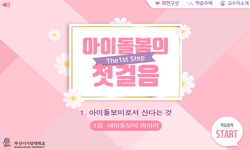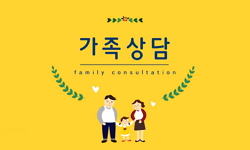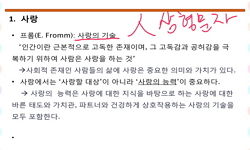본 연구의 목적은 이야기치료 프로그램이 비행청소년의 스트레스 대처능력과 자아존중감에 미치는 영향에 관한 단일사례연구이다. 비행청소년을 위한 이야기치료프로그램은 White와 Epston(20...
http://chineseinput.net/에서 pinyin(병음)방식으로 중국어를 변환할 수 있습니다.
변환된 중국어를 복사하여 사용하시면 됩니다.
- 中文 을 입력하시려면 zhongwen을 입력하시고 space를누르시면됩니다.
- 北京 을 입력하시려면 beijing을 입력하시고 space를 누르시면 됩니다.
이야기치료 프로그램이 비행청소년의 스트레스 대처능력과 자아존중감에 미치는 영향에 관한 단일사례연구 = A Single Case of Narrative Therapy Program on the Stress Coping Ability and Self-Esteem of Juvenile Delinquents.
한글로보기https://www.riss.kr/link?id=T15802832
- 저자
-
발행사항
공주 : 공주교육대학교 교육대학원, 2021
-
학위논문사항
학위논문(석사) -- 공주교육대학교 교육대학원 , 상담심리 , 2021. 2
-
발행연도
2021
-
작성언어
한국어
-
주제어
이야기치료 ; 이야기치료 프로그램 ; 비행청소년 ; 스트레스 대처능력 ; 자아존중감
-
발행국(도시)
충청남도
-
형태사항
196 ; 26 cm
-
일반주기명
지도교수: 하요상
-
UCI식별코드
I804:44003-200000378815
- 소장기관
-
0
상세조회 -
0
다운로드
부가정보
국문 초록 (Abstract)
-이야기치료 프로그램이 비행청소년의 스트레스 대처능력 향상에 효과가 있는가?
-이야기치료 프로그램이 비행청소년의 자아존중감 향상에 효과가 있는가?
위의 연구문제를 위해 스트레스 대처능력 척도와 자아존중감 척도를 검사도구로 사용하였으며 D시 소재 S중학교 3학년 남학생을 대상으로 8주간 총 10회기에 걸쳐 이야기치료 프로그램을 실시하였다. 프로그램의 효과성을 검증하기 위하여 검사지 분석, 각 과정별 내용 분석, 연구자 관찰 내용분석을 하였으며 그 결과는 다음과 같다.
이야기치료 프로그램은 비행청소년의 스트레스 대처능력과 자아존중감 향상에 긍정적인 효과를 보였다. 대상 학생은 이야기치료 프로그램 실시 초기에는 스트레스로 인해 짜증과 화가 많이 나 있었고, 인지 정서 행동에서 위험하고 공격적인 부적응의 모습을 보였으나 프로그램 종결시에는 자신의 강점과 어려운 상황을 극복할 수 있는 자원들을 알게 되며 자신의 정체성을 새로 다지는 계기가 되어 희망적인 이야기를 통해 자신의 행동에 대한 책임감을 긍정적인 행동으로 보여주고 스트레스에 대해 대안활동을 구체적으로 제시하는 변화를 보여주었다. 그리고 상담초기에는 낮은 자아존중감으로 자신감이 결여되어 자신을 원망하며, 자신과 타인을 부정적으로 평가하고 불만이 많았지만 프로그램 종결시에는 자신의 긍정적인 요소를 알아가게 되어 새로운 정체감을 가지고, 자신과 타인이 함께 행복한 ‘행복의 다이너마이트’의 이야기를 완성해가는 긍정적 변화를 가져왔다. 이러한 연구 결과는 이야기치료 프로그램이 비행청소년의 낮은 스트레스 대처능력과 자아존중감 향상을 위한 유용한 프로그램이라는 점을 시사한다.
앞으로의 연구에서는 첫째, 이야기치료 프로그램을 비행청소년인 중학교 남학생 한 명을 대상으로 한 단일사례연구이기에 성별을 고려한 전문적 프로그램의 질적 연구의 병행. 둘째, 이야기치료 프로그램을 좀 더 다양한 계층인 초, 중, 고등학생 비행청소년 대상으로 한 연구의 병행. 셋째, 본 연구인 이야기치료 프로그램의 추후 효과 검증을 위한 장기적인 후속연구의 실시. 넷째, 이야기치료프로그램이 주기적, 연속적으로 진행될 수 있는 환경에서 실시하여 그 효과성을 검증 받을 수 있기를 기대한다.
본 연구의 목적은 이야기치료 프로그램이 비행청소년의 스트레스 대처능력과 자아존중감에 미치는 영향에 관한 단일사례연구이다. 비행청소년을 위한 이야기치료프로그램은 White와 Epston(2015)의 이야기치료 이론에 기반을 두고 비행청소년의 비자발적인 특성을 고려하여 재구성하여 적용하였다. 이를 위해 다음과 같은 연구문제를 설정하였다.
-이야기치료 프로그램이 비행청소년의 스트레스 대처능력 향상에 효과가 있는가?
-이야기치료 프로그램이 비행청소년의 자아존중감 향상에 효과가 있는가?
위의 연구문제를 위해 스트레스 대처능력 척도와 자아존중감 척도를 검사도구로 사용하였으며 D시 소재 S중학교 3학년 남학생을 대상으로 8주간 총 10회기에 걸쳐 이야기치료 프로그램을 실시하였다. 프로그램의 효과성을 검증하기 위하여 검사지 분석, 각 과정별 내용 분석, 연구자 관찰 내용분석을 하였으며 그 결과는 다음과 같다.
이야기치료 프로그램은 비행청소년의 스트레스 대처능력과 자아존중감 향상에 긍정적인 효과를 보였다. 대상 학생은 이야기치료 프로그램 실시 초기에는 스트레스로 인해 짜증과 화가 많이 나 있었고, 인지 정서 행동에서 위험하고 공격적인 부적응의 모습을 보였으나 프로그램 종결시에는 자신의 강점과 어려운 상황을 극복할 수 있는 자원들을 알게 되며 자신의 정체성을 새로 다지는 계기가 되어 희망적인 이야기를 통해 자신의 행동에 대한 책임감을 긍정적인 행동으로 보여주고 스트레스에 대해 대안활동을 구체적으로 제시하는 변화를 보여주었다. 그리고 상담초기에는 낮은 자아존중감으로 자신감이 결여되어 자신을 원망하며, 자신과 타인을 부정적으로 평가하고 불만이 많았지만 프로그램 종결시에는 자신의 긍정적인 요소를 알아가게 되어 새로운 정체감을 가지고, 자신과 타인이 함께 행복한 ‘행복의 다이너마이트’의 이야기를 완성해가는 긍정적 변화를 가져왔다. 이러한 연구 결과는 이야기치료 프로그램이 비행청소년의 낮은 스트레스 대처능력과 자아존중감 향상을 위한 유용한 프로그램이라는 점을 시사한다.
앞으로의 연구에서는 첫째, 이야기치료 프로그램을 비행청소년인 중학교 남학생 한 명을 대상으로 한 단일사례연구이기에 성별을 고려한 전문적 프로그램의 질적 연구의 병행. 둘째, 이야기치료 프로그램을 좀 더 다양한 계층인 초, 중, 고등학생 비행청소년 대상으로 한 연구의 병행. 셋째, 본 연구인 이야기치료 프로그램의 추후 효과 검증을 위한 장기적인 후속연구의 실시. 넷째, 이야기치료프로그램이 주기적, 연속적으로 진행될 수 있는 환경에서 실시하여 그 효과성을 검증 받을 수 있기를 기대한다.
다국어 초록 (Multilingual Abstract)
-Is the story therapy program effective in improving the stress coping ability of juvenile delinquents?
-Is the story therapy program effective in improving self-esteem for juvenile delinquents?
The stress coping ability scare and self-esteem scale were used to answer those two questions, and the story therapy program was conducted for 8 weeks in 3rd grade boys at S middle school located in D city. In order to verify the effectiveness of the program, analysis was performed on test paper input, results obtained in process, and researcher’s own observation. The results are as follows.
The story therapy program had a positive effect on improving stress coping ability and self-esteem of juvenile delinquents. At the beginning of the story therapy program, the target students were very annoyed and upset due to stress, and showed dangerous and aggressive behavior in cognitive and emotional adjustment. However, at the end of the program, they became aware of their strengths and resources available to deal with difficult situations, and it became an opportunity to re-establish their identity. And, through hopeful stories, they showed positive behaviors to indicate that they are responsible for their own behavior and showed changes in which they specifically presented alternative activities in response to stress. And at the beginning of the counseling, they resented themselves because they lacked confidence due to low self-esteem, evaluated themselves and others negatively, and had many complaints. However, at the end of the program, they became acquainted with their own positive elements, brought a new sense of identity, and changed positively enough to complete the story of “Happiness Dynamite,” where they themselves, along with others, became happy together. These results suggest that the story therapy program is useful for improving low stress coping ability and self-esteem of juvenile delinquents.
There are four things to consider in future research. First, since the story therapy program is a case study involving male delinquent students from a middle school, a qualitative study that includes gender as a variable may be conducted. Second, the subject pool may be diversified by including juvenile delinquents in elementary, middle, and high school. Third, a long-term follow-up study may be conducted to verify the effectiveness of the story therapy program. Fourth, the effectiveness of the story therapy program may be investigated in an environment where in can be conducted periodically.
This is case study on the effects of a story therapy program on stress coping ability and self-esteem of juvenile delinquents. The theory of story therapy by White and Epston (2015) was revised to create the story therapy program for juvenile delinqu...
This is case study on the effects of a story therapy program on stress coping ability and self-esteem of juvenile delinquents. The theory of story therapy by White and Epston (2015) was revised to create the story therapy program for juvenile delinquents in consideration of the involuntary characteristics of juvenile delinquents. To this end, the following research questions were set up.
-Is the story therapy program effective in improving the stress coping ability of juvenile delinquents?
-Is the story therapy program effective in improving self-esteem for juvenile delinquents?
The stress coping ability scare and self-esteem scale were used to answer those two questions, and the story therapy program was conducted for 8 weeks in 3rd grade boys at S middle school located in D city. In order to verify the effectiveness of the program, analysis was performed on test paper input, results obtained in process, and researcher’s own observation. The results are as follows.
The story therapy program had a positive effect on improving stress coping ability and self-esteem of juvenile delinquents. At the beginning of the story therapy program, the target students were very annoyed and upset due to stress, and showed dangerous and aggressive behavior in cognitive and emotional adjustment. However, at the end of the program, they became aware of their strengths and resources available to deal with difficult situations, and it became an opportunity to re-establish their identity. And, through hopeful stories, they showed positive behaviors to indicate that they are responsible for their own behavior and showed changes in which they specifically presented alternative activities in response to stress. And at the beginning of the counseling, they resented themselves because they lacked confidence due to low self-esteem, evaluated themselves and others negatively, and had many complaints. However, at the end of the program, they became acquainted with their own positive elements, brought a new sense of identity, and changed positively enough to complete the story of “Happiness Dynamite,” where they themselves, along with others, became happy together. These results suggest that the story therapy program is useful for improving low stress coping ability and self-esteem of juvenile delinquents.
There are four things to consider in future research. First, since the story therapy program is a case study involving male delinquent students from a middle school, a qualitative study that includes gender as a variable may be conducted. Second, the subject pool may be diversified by including juvenile delinquents in elementary, middle, and high school. Third, a long-term follow-up study may be conducted to verify the effectiveness of the story therapy program. Fourth, the effectiveness of the story therapy program may be investigated in an environment where in can be conducted periodically.
목차 (Table of Contents)
- Ⅰ. 서 론 1
- 1. 연구의 필요성 및 목적 1
- 2. 연구문제 7
- Ⅱ. 이론적 배경 8
- Ⅰ. 서 론 1
- 1. 연구의 필요성 및 목적 1
- 2. 연구문제 7
- Ⅱ. 이론적 배경 8
- 1. 이야기치료 8
- 가. 이야기치료의 정의와 특징 8
- 나. 이야기치료 과정 및 기법 11
- 다. 이야기치료의 상담자의 역할 17
- 2. 스트레스 대처능력 20
- 가. 스트레스 대처능력의 개념 20
- 나. 스트레스 대처능력의 유형 22
- 다. 비행청소년과 스트레스 대처능력 25
- 3. 자아존중감 28
- 가. 자아존중감의 개념 28
- 나. 자아존중감의 구성요소 30
- 다. 비행청소년과 자아존중감 35
- 4. 이야기치료와 스트레스 대처능력 38
- 5. 이야기치료와 자아존중감 40
- Ⅲ. 연구방법 43
- 1. 연구대상 43
- 가. 내담자 특성 43
- 나. 사례개념화 47
- 2. 연구도구 49
- 가. 스트레스 대처능력 척도 49
- 나. 자아존중감 척도 50
- 다. 이야기치료 프로그램 51
- 3. 연구설계 58
- 4. 연구절차 58
- 5. 자료처리 및 분석 58
- 가. 질적 연구 59
- 나. 양적 연구 59
- Ⅳ. 연구결과 60
- 1. 과정별 상담내용 및 분석 60
- 가. 관계형성 과정 [1회기] 60
- 나. 지배적 이야기 과정 [2~3회기] 66
- 다. 문제의 외재화 과정 [4회기] 83
- 라. 문제의 영향력 과정 [5~6회기] 89
- 마. 독특한 결과 과정 [7회기] 104
- 바. 대안적 이야기 과정 [8~9회기] 114
- 사. 인정의식 과정 [10회기] 136
- 2. 검사지 반응분석 146
- 가. 스트레스 대처능력의 변화 147
- 나. 자아존중감의 변화 149
- 다. 프로그램 실시 전 후 행동관찰 및 분석 151
- Ⅴ. 논의 및 결론 153
- ※ 참고문헌 158
- ※ ABSTRACT 167










